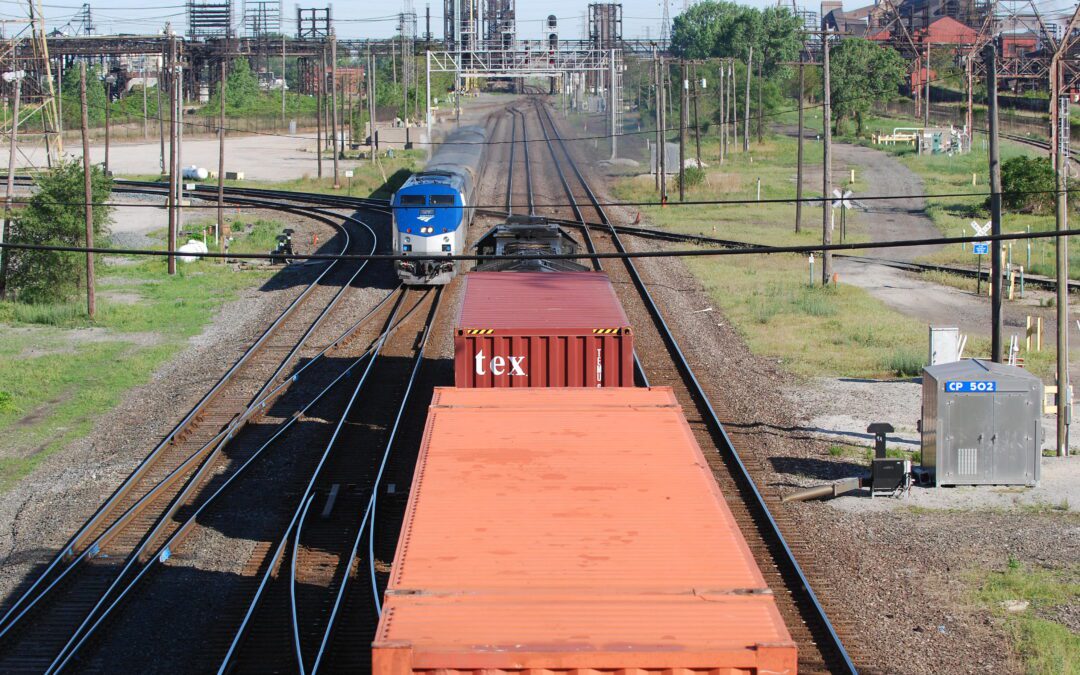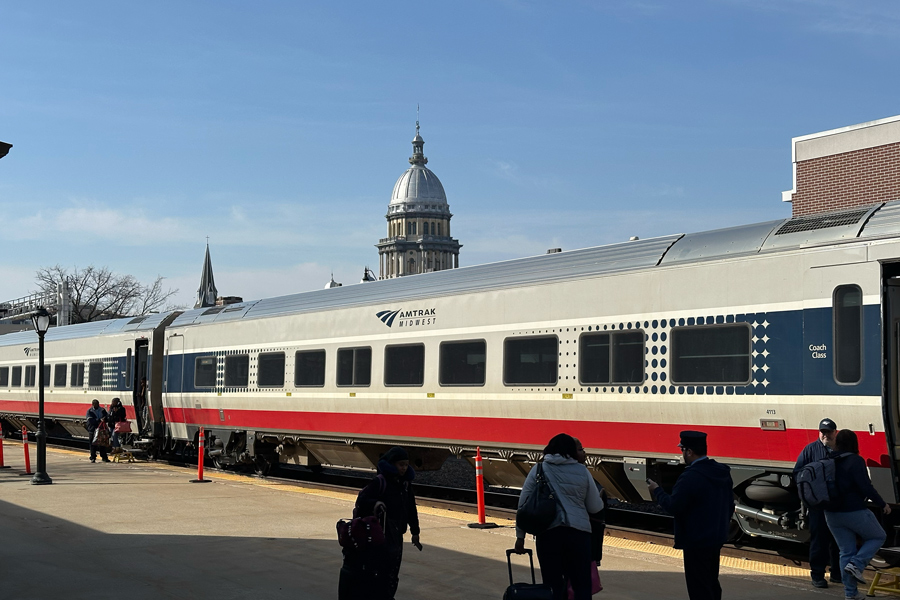Engineering Firm Chosen to Design Critical High-Speed Rail Segment in California HDR has been awarded a five-year contract to deliver engineering and design services for a 54-mile segment between Palmdale and Victorville. This is a critical connection between...
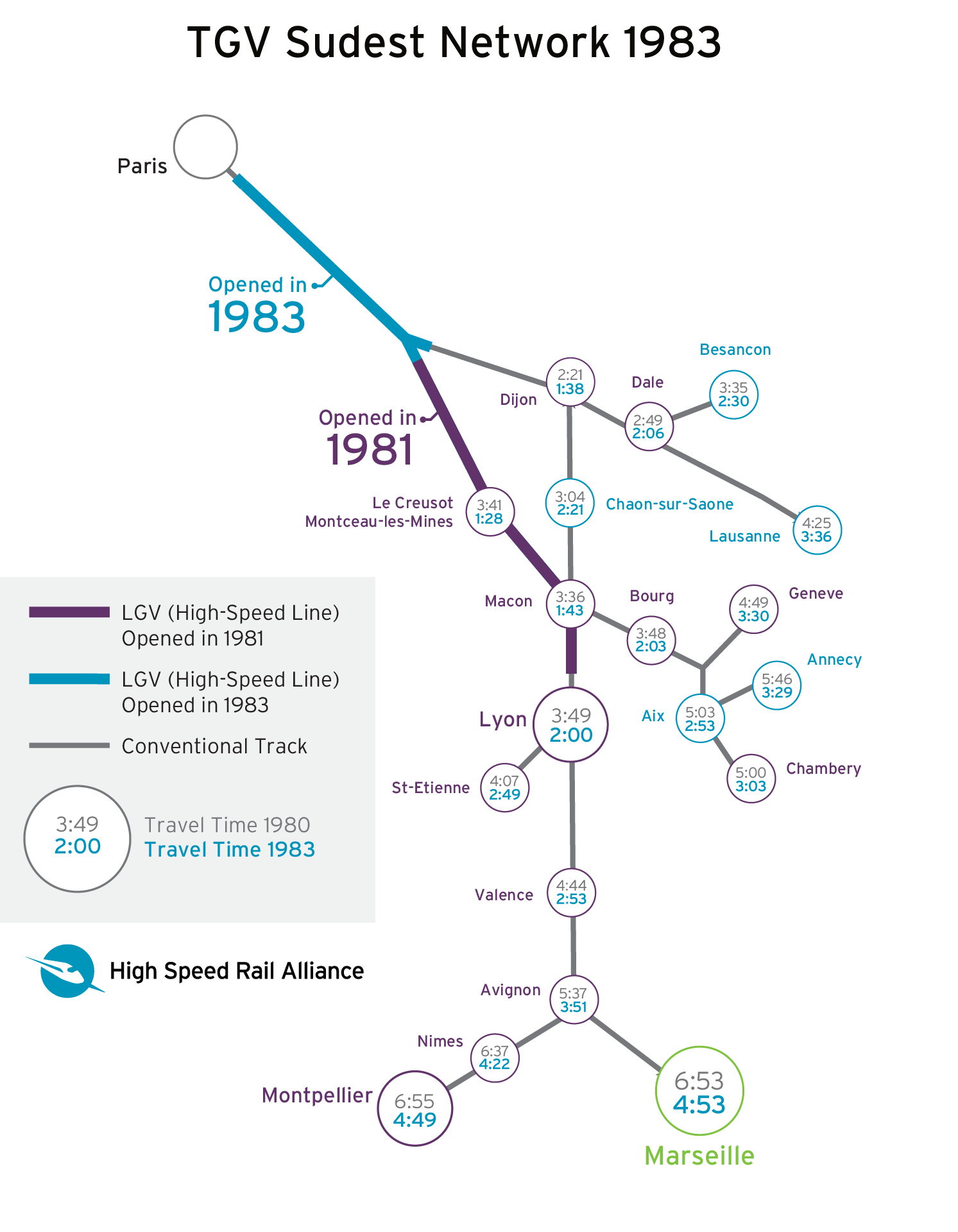
Segments of high-speed line between Paris and Lyon allowed TGV (high-speed trains) to slash travel times throughout southeast France. Marseille, which is 500 miles from Paris, saw dramatic improvements.
How France created a world-class high-speed rail system—one segment at a time
Europe’s first dedicated high-speed line—the LGV Sud Est (or Southeast High Speed Line)—shows the wisdom of the Integrated Network Approach.
The LGV Sud Est is frequently called the Paris – Lyon line. But, when the line opened in 1981, the high-speed segment was only two-thirds of the total distance—about 180 of 280 miles.
TGV (or High Speed Train) trains used conventional, shared-use tracks for the first 100 miles south from Paris, and they used the older “classic” tracks for the last three miles into Lyon.
This blend of high-speed and “classic” tracks cut the travel time from 4 hours to 2 hours and 40 minutes.
The next high-speed segment—another 70 miles—opened in 1983 and slashed the travel time to just 2 hours.
That first LGV did more than link Paris to Lyon. TGV trains from Paris used the LGV to reduce travel times to cities throughout the southeast, including Avignon, Geneva, and Marseille.
These travel time reductions had a big impact on ridership, expanding from 12 million passengers in 1980, the year before inauguration of TGV service, to 23 million in 1992.
Forty Years of Steady Improvements
Serving more of the population with faster trains to and from Paris helped build public support for expanding the LGVs.
For example, the LGV Sud Est was extended in two phases to Marseille. Now that trip, similar to Chicago to Memphis is just 3 hours 15 minutes.
France has used this strategy for forty years. It gradually connects new cities to the network and blends segments of high-speed rail with conventional tracks. As new high-speed tracks are added, the network is built out and travel times are slashed.
The newest segments are extensions of the LGV Atlantique (Atlantic high-speed line) which heads west from Paris then splits into a “Y” to reach Le Mans and Tours. The first phase opened in 1990. The new segments opened in 2017 and extend 200 mph service west from Le Mans to Rennes and south from Tours to Bordeaux.
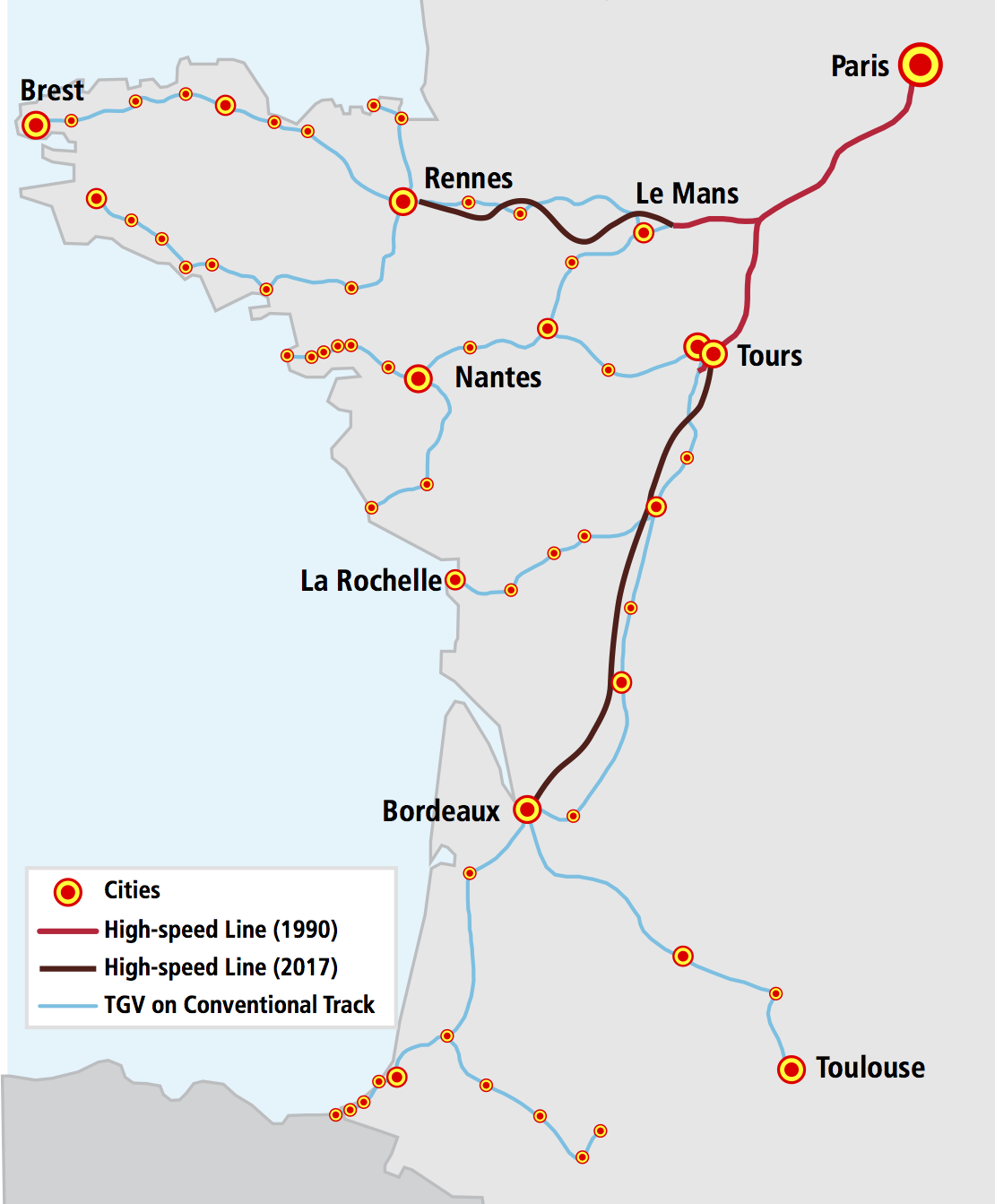
This is the LGV (High Speed Line) network in 2019. The Integrated Network Approach allows high-speed trains to travel beyond the high-speed lines, benefit entire regions.
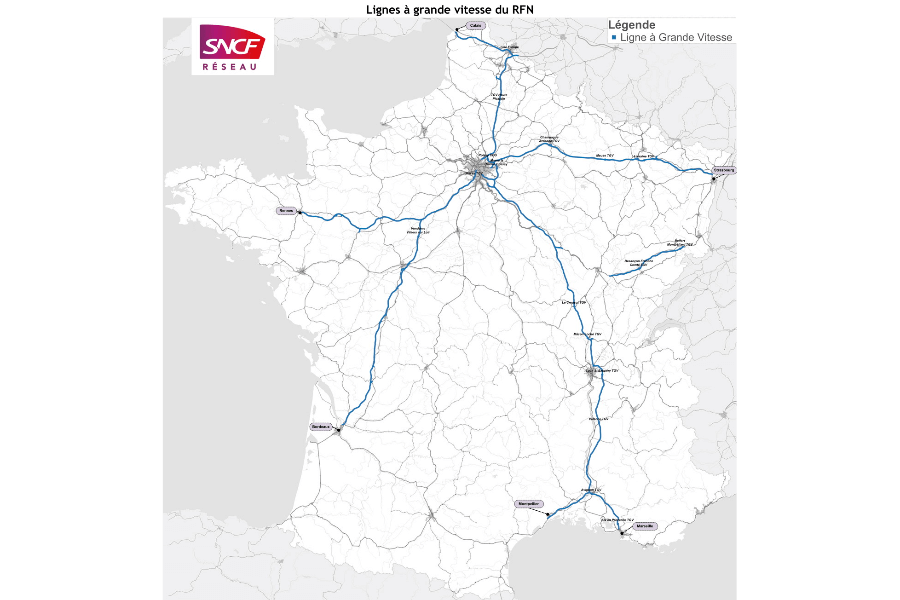
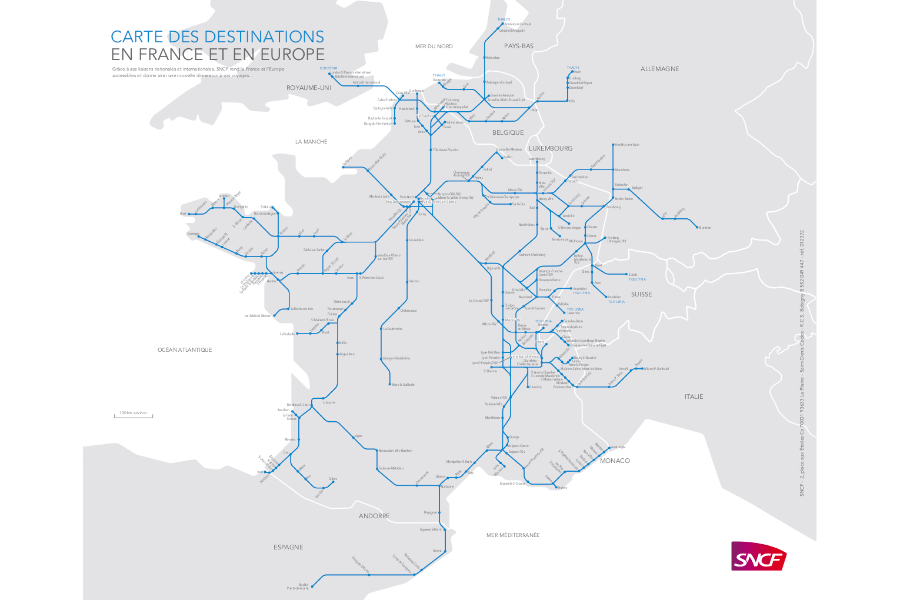
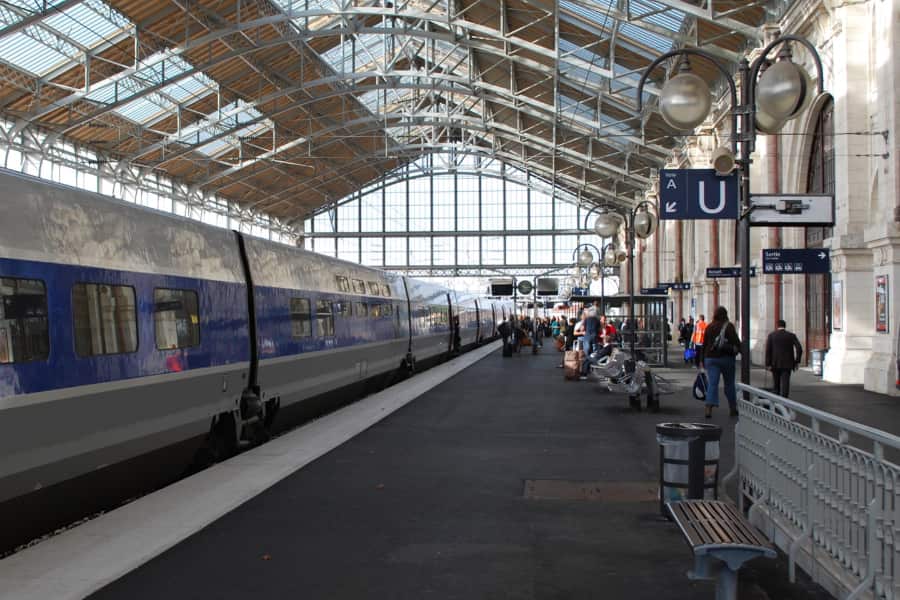
The Gare de la Rochelle, opened in 1922, is served by high-speed trains despite being miles beyond the high-speed line.
International Coverage
And the network is international, covering all of France and extending into England, the Netherlands, Switzerland, and Italy.
Flexible train sets (meaning trains that operate smoothly on different kinds of tracks) are crucial to the strategy’s success.
TGV trains travel at 205 mph on the newest high-speed lines. On slower, conventional tracks, they travel at slower top speeds, but still save time with the ability to take curves faster and accelerate quickly out of stations.
Today’s TGV (High Speed Train) network serves most of the country and extends internationally. Compare this with the LGV (High Speed Line) network below.
The Latest from HSRA
Our Latest Blog Posts
Check out the latest news, updates, and high speed rail insights from our blog!


